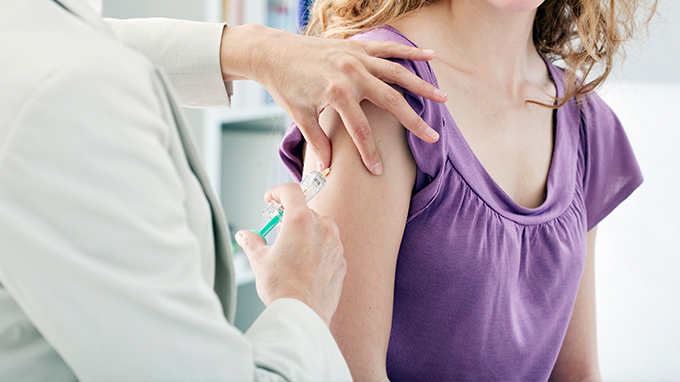Cesarean section how diet helps recovery
Postpartum recovery not only requires more food that is beneficial to wound recovery, but also needs to supplement the nutrition required by the newborn. Caesarean section is more invasive than natural delivery, and it also involves the recovery of the normal function of the digestive system, so it is necessary to consider both wound healing and lactation in the postpartum diet.

1. Exhaust
The first level after cesarean section surgery should be exhaust (ie farting). After exhausting, you can eat normally. Before exhausting, you can drink some boiled water or radish water according to the doctor’s recommendation.
2. Liquid diet
Exhaust quickly for a few hours, and the slower will also be the next day after delivery. When the woman is exhausted, you can start eating some liquid diets, such as rice oil, lotus root powder, warm juice (not high acidity), etc.
3. Semi-liquid diet
exhausted after delivery, you can drink millet porridge, soft noodles, steamed egg, noodle soup in the second meal , Small lump soup and other semi-liquid diets, but need to be light and salt, it is not appropriate to start drinking bone soup immediately, especially primipara, to avoid blockage of the mammary ducts caused by acute mastitis.
4. Eat less and eat more meals
Whether you give birth or have a caesarean section, you need to eat less and eat more meals in a step-by-step way. Meals, such as drinking warm juice, milk, warm yoghurt, cakes, buns, nut kernels, etc., especially maternal need to breastfeed at night, you can drink chicken soup, crucian soup, milk oatmeal 2-3 hours after dinner Or millet porridge.
5. Wound healing diet
High protein, high minerals and high vitamin foods help wound healing, such as lean meat, chicken, pigeons Meat, beef, fish, shrimp high-protein foods, about 25g more protein intake per day than before pregnancy. For example, adding 50g of beef, 50g of fish, and 200g of milk per day can add 25g of protein.
The common folk commonly used red dates stewed rooster soup, longan meat stewed pigeon, black fish soup and other foods to promote wound healing. Wound healing requires more collagen, and collagen synthesis in the body must have sufficient vitamin C. Cabbage heart, tomatoes, rape, cabbage, kiwi, papaya, mango and other foods can be selected. In addition, wheat germ is rich in trace elements such as B vitamins, zinc and selenium, which is also beneficial to wound healing.
6. Promote lactation diet
There are some folk traditions, open milk must use a lot of broth as food, in fact, for good health, can be normal Maternal meals, even drinking porridge to eat noodles will make milk very smooth. But after all, maternal surgery and lactation require more calories (500kcal/d more than before pregnancy), protein, calcium, vitamin A, iron, omega-3 polyunsaturated fatty acids and iodine and other nutrients. About 80-100g of fish, poultry, eggs, lean meat, and soy products are added every day than before pregnancy; milk intake needs to be increased by 200g every day than before. Vitamin A-rich foods include animal liver, egg yolk and other foods. Omega-3 polyunsaturated fatty acids, iodine and other nutrient-rich foods include sea fish, linseed oil, perilla oil, seaweed food, etc.
7. Balanced and nutritious diet
Reasonable and balanced nutritional diet is particularly important for women, due to historical economic level, traditional confinement meal millet Adding eggs is a complete food structure. The diet is not comprehensive. It does not mean that mothers cannot eat vegetables and fruits. They just need to pay attention to temperature. In addition, they need to avoid spicy foods and seasonings. The diet should not be greasy.
Related Articles

- Can I drink tea for pregnancy
- Pregnancy is the most important event in a woman’s life. How to get pregnant smoothly and how to conceive a healthy baby is a problem that every couple and every family are very concerned a
- 2020-08-03

- What are the nutritional characteristics of nuts
- Nuts are one of the small foods that people like very much nowadays. They are rich in nutrients, high in protein, oil, minerals, and vitamins. They have excellent effects on human growth an
- 2020-08-03

- Celery leaves
- It is a habit of many people to eat celery and not to eat leaves. I think the leaves are just scraps. In fact, it is just wrong here. Almost all vegetables with leaves have a common featur
- 2020-08-03

- Is a cookie a nutritious food
- Biscuit is the most common snack food, but if it is said that biscuit is not nutritious, it seems to have aggrieved it. Every food has nutrients, even instant noodles or biscuits.
- 2020-08-03

- How to make a quick nutritious breakfast
- People often say that eating like an emperor for breakfast, like an aristocrat for lunch, and like a beggar for dinner will be healthier. How can I prepare a nutritious breakfast in 15 min
- 2020-08-03

- Can gout drink alcohol?
- Patients with gout should drink more water than wine. Gout diet is stricter, and even exceeds the dietary contraindications of diabetes, hypertension and high blood fat. Strict dietary tabo
- 2020-08-03
